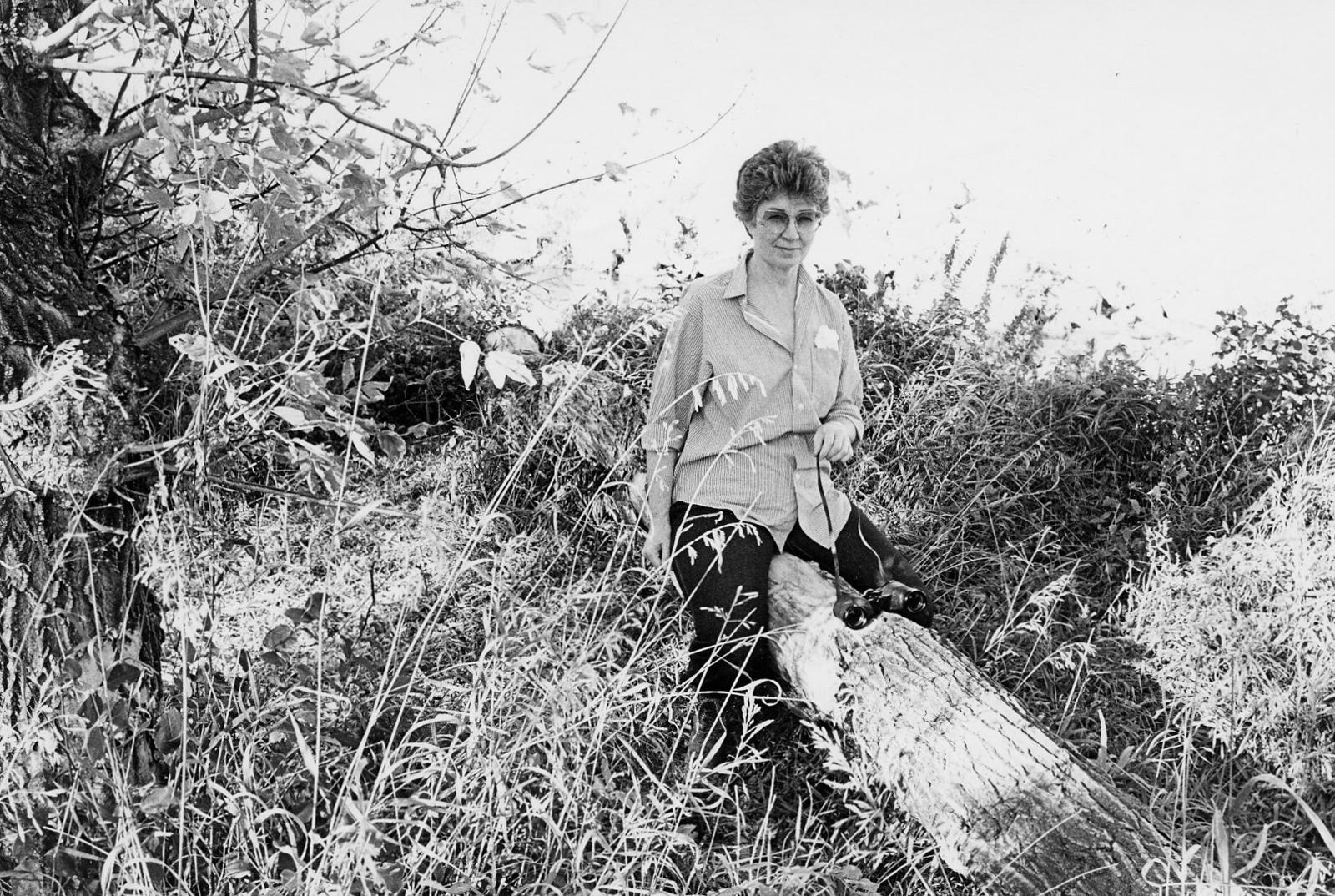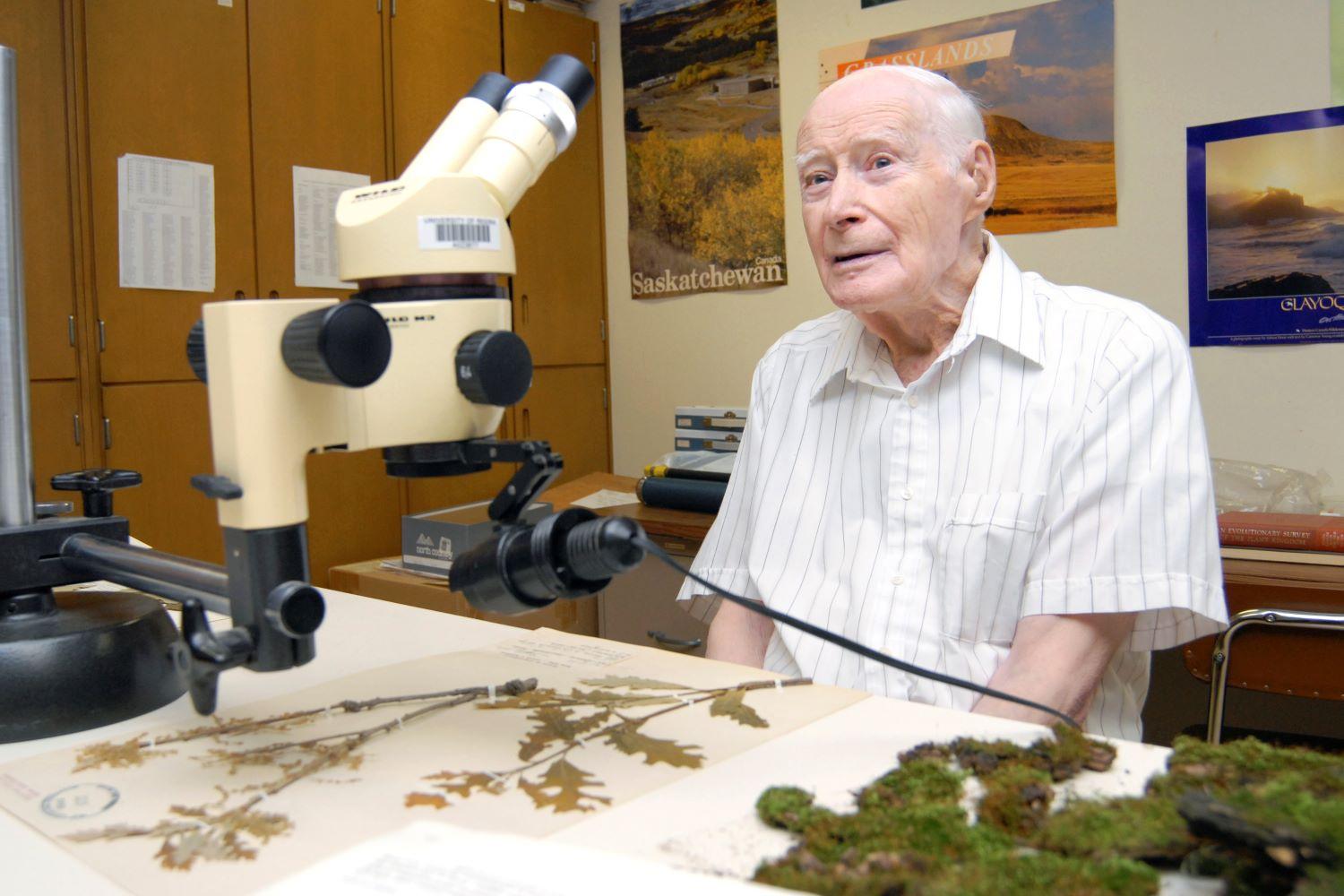
Donor Spotlight: Dr. Evelyn Jonescu
For more than half of the University of Regina’s 50-year history as an independent degree-granting institution, retired Faculty of Education (Science) professor Dr. Evelyn Jonescu has dedicated her life to making a positive impact on the prairie environment. She accomplished this through her leadership not only as an inspiring educator whose passion for Saskatchewan prairie ecology infused her teaching and influenced new teachers, but also as an engaged philanthropist in support of the U of R’s Herbarium.
For this special issue of our Donor Impact Report, and in celebration of our 50th anniversary, we reached out to Evelyn for a look at her life and legacy.
Q: There are various areas of interest that you have generously supported over the years, among which is the Herbarium. Their continued work would not be possible without the financial contributions of public and private donors, such as you. What has fueled your passion to donate toward the Herbarium in particular?
A: Mainly, it was because of my high regard for Dr. Ledingham as a botanist, as an unassuming and motivational leader in his classroom, in his department and during plant identification/collecting forays across the prairies, and for the unfailing generosity of his time and talents in encouraging appreciation of nature.
In addition, I was impressed by the University’s decision to put further resources into ensuring the preservation of the collection, to publicize it globally, and to encourage technological developments that will make it widely available for education and research. I am grateful for the opportunity to contribute to a project that will extend knowledge about and concern for the natural world of the prairies.
Q: Did you work with Dr. Ledingham?
A: Although I wasn’t employed in the Biology Department with him, we were faculty colleagues of the University. During my years of graduate work in biology at the University of Wisconsin (Madison) – which incidentally was an institution he had graduated from before me – and in ecology at the University of Saskatchewan, and during many more years of university teaching, there were many, many occasions for interacting with him and benefitting from his readiness to share his botanical interests.
Q. You are highly regarded for your work to incorporate the study of Saskatchewan ecology into high schools and motivate new teachers to learn about and teach in the outdoor environment. What highlight from your time at the U of R stands out for you?
A: I cannot recall one particular highlight for me at the U of R. Those early years presented many exhilarating opportunities to participate in what we believed was the birth of a new university: designing our workspaces in the new Education Building and watching those spaces appear; working with colleagues in Education and leaders such as Dr. Bob Anderson, idealistically certain that we were developing the best, most progressive ways of preparing teachers; working with colleagues in the wider university community, such as Professor Fred Anderson in Economics – and many others – striving to formulate innovative courses and programs for learners; and, designing new ways of structuring the committees, policies and procedures that would provide the newest, most effective operation of any institution. It was an exciting, heady time.
And, of course, most exciting of all were the students! How fortunate we were to have progressive, wise leaders who seemed to know that the way to develop the best in us as educators and researchers was to show us their confidence in our judgement and allow us to assume responsibility for our individual course content and procedures in interacting with our students. I recall that our only obligation in doing so was to regularly share our innovations and insights with our colleagues.

My students were those with degrees in biology and had perhaps some introductory teaching experience. They had the learner-maturity of persons who have already achieved some goals and seemed to have set new goals for themselves. That quality in them enabled me to pursue my teaching philosophy of serving and facilitating rather than lecturing and trying to impart my own knowledge. My aim was to encourage each individual to examine their own strengths and experiences to find their unique ability to encourage prospective students to want to learn about our prairie environment and living things in particular. It was a joy to see their enthusiasm and how ready they were to prepare themselves. So many young, inspired biology teachers went out to schools and later told me of the rewards that effective teaching brought them. Several of them were able to secure positions in Regina and nearby communities. Stimulating sharing during classroom learning and on our frequent field excursions had resulted in a continuing bond among many of them and with me. Over the past half century that bond has resulted, among those of us left, in frequent social get-togethers.
I am delighted to have heard from third-party sources that their reputations had spread: Directors of Education were urging school boards to hire graduates of these classes.
Q: How does it make you feel to know that you have made and continue to make a profound impact on new teachers in our province and on our knowledge of Saskatchewan’s ecology?
A: It makes me feel extremely grateful to have witnessed the development of inspired, enthusiastic learner-teachers (whom I have known) gradually and effectively develop their own career satisfactions, as I have, in facilitating other learners in ongoing understanding and appreciation of what our prairie environment can provide for us and for those with whom we interact.
Q: As we celebrate the University’s 50th anniversary, what tangible impact do you feel philanthropy has had on the University’s growth and success?
A: The essence of a university ought to be philanthropic – existing for the common good, rather than private gain. My earliest association with the U of R coincided with its transition from being a “secondary institution,” a campus of the U of S, to becoming independent with all the attendant challenges and opportunities. Of course, there were persisting, more conservative influences from past history and ties with the “mother” institution, but the excitement of newness was very strong. Government support was stronger then, providing the University with a degree of independence that seems to have diminished. Increasingly, the University has had to turn to private funding which eventually impinges on its focus on the common good while needing to cater to private interests. As public funds decrease, if we hope to sustain some independence for our University, unrestricted donor support becomes more and more critical.
Q: You’ve held many roles at the U of R, including faculty member in the Faculty of Education, Executive Director of the Canadian Plains Research Centre, and board member of the Seniors’ University Group. As someone who is an integral part of the U of R’s 50-year story, what is your vision or hope for the University’s next 50 years waiting to unfold?
A: At my age, it seems the world has become too chaotic to confidently envision the future. My hope is for the U of R to be able to exist as a small, exemplary, independent entity, able to encourage its enrollees to learn to be confident, independent thinkers, in spite of forces that persist in shaping them to be otherwise.
Banner photo credit: Evelyn Jonescu
